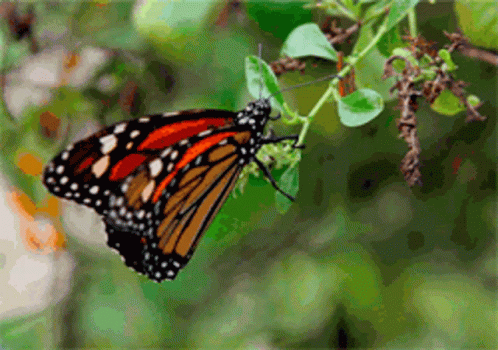FFON EcoScribe.
Just as a bee isn’t merely a bee, a pollinator isn’t just a bee either. In the vast orchestra of nature, there are numerous (200,000+ species) unsung heroes playing their part in the symphony of pollination – far too many to mention here, but let’s make a start…
1. Butterflies: The Colourful Wanderers

Fluttering gracefully, butterflies may seem like just a pretty sight. But their contribution to pollination is as vibrant as their wings. As they seek nectar, they inadvertently carry pollen from bloom to bloom, aiding in the growth of many plants.
2. Bats: The Nocturnal Navigators
Often misunderstood, bats are crucial pollinators, especially in tropical and desert ecosystems. Their night-time activities ensure the survival of many plants, including some species of mangoes, bananas, and agave.
3. Birds: The Feathered Gardeners

Birds, particularly hummingbirds, play a pivotal role in pollination. Their long beaks are perfectly adapted to sip nectar, transferring pollen as they move from flower to flower.
4. Beetles: The Ancient Pollinators

Beetles were among the first pollinators to co-evolve with flowering plants. They might not have the finesse of bees or butterflies, but their contribution to maintaining the diversity of plant life is undeniable.
5. Wind and Water: The Elemental Forces

Not all pollination is animal-led. Wind and water also play their parts, carrying pollen across distances. This reminds us that even the elements have a role in the interconnected web of life.
The Conclusion? Every Action Counts
Just as with bees, these pollinators are a signal. They remind us of the intricate interdependencies of our ecosystem. Their health reflects our planet’s health. Protecting them means protecting the biodiversity that sustains us all.
It’s not just about saving bees; it’s about preserving the harmony of nature where every player has a vital role – from the lovely (ferocious) lacewing to the nocturnal brilliance of bats.

Here’s 10 Simple Actions to Support Pollinators in Your Garden:
- Plant a Pollinator-Friendly Garden: Choose a variety of plants that flower at different times of the year to provide a continuous food source for pollinators.
- Go Native: Opt for native plants which are often well adapted to local pollinators and require less water and maintenance.
- Avoid Pesticides: Chemicals can be harmful to pollinators, so practice organic gardening methods to keep your garden pollinator-friendly.
- Leave Some Wild Corners: Undisturbed spots can provide essential habitat for pollinators to nest and overwinter.
- Provide Water Sources: A shallow dish with clean water and pebbles or twigs for landing spots can help pollinators stay hydrated.
- Install Pollinator Homes: Set up bee hotels and nesting boxes to offer shelter to solitary bees and other beneficial insects.
- Let It Grow: Allow your lawn to grow a little longer to give clovers, daisies, and other lawn flowers a chance to bloom – these are excellent food sources for pollinators.
- Deadhead Flowers Judiciously: Deadheading some plants encourages more blooms, while leaving some spent flowers can provide seeds and habitat.
- Create a Night Haven: Incorporate night-blooming flowers to attract nocturnal pollinators like moths and bats.
- Educate Your Community: Share your knowledge and efforts with neighbours and community groups to create wider support for pollinator-friendly practices.
By implementing these simple actions, you can make your garden a haven for pollinators, contributing to the health of your local ecosystem.
Here’s to the unsung heroes.


One response to “The Unsung Heroes of Pollination: Beyond the Bee”
[…] While bees often capture the limelight in discussions about pollination, their stage is shared with unsung heroes that operate under the cloak of night. This guest post by Dafydd Lewis shines a spotlight on moths, […]
LikeLike